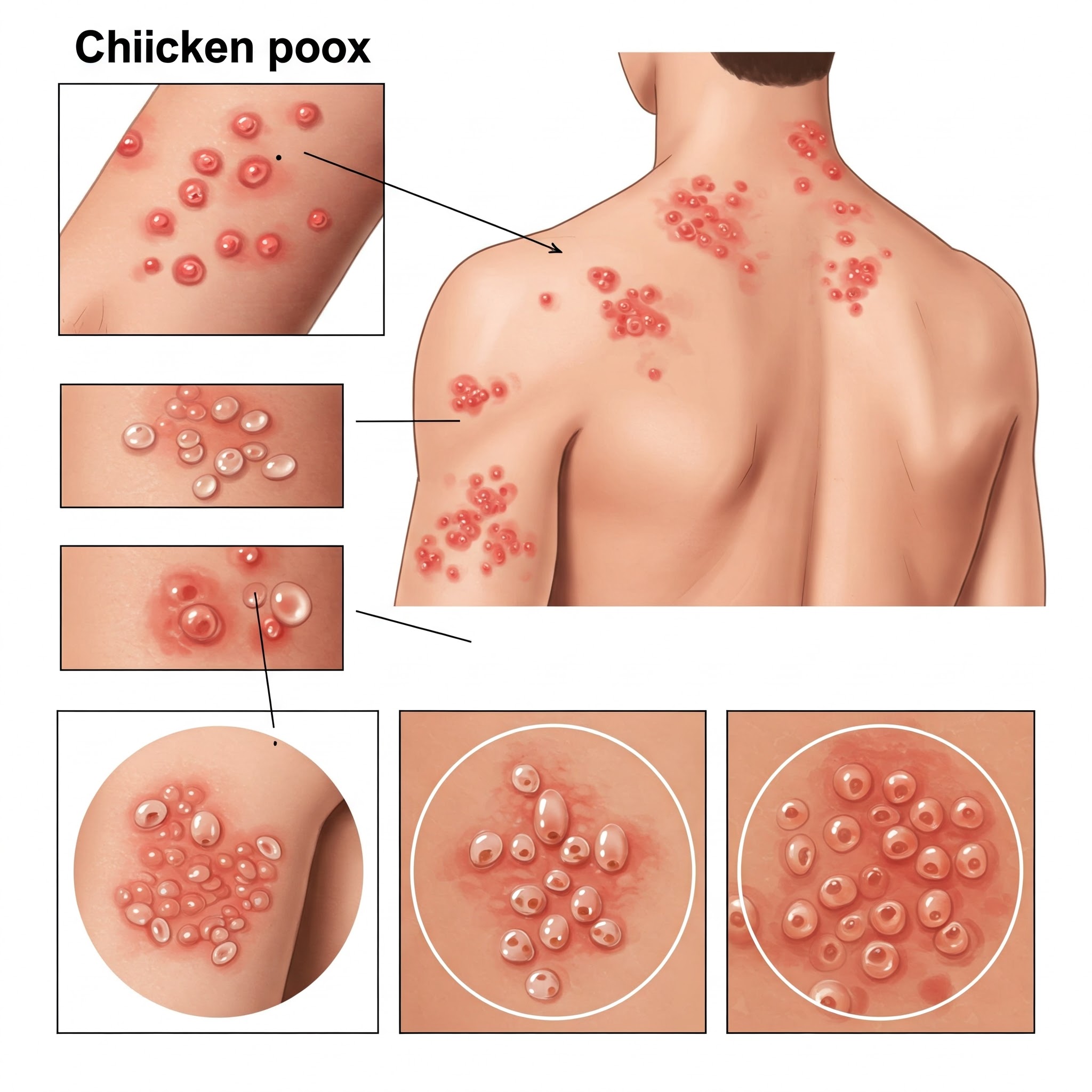When you think of chickenpox, you might picture kids scratching away during cooler months. But can you get chickenpox in summer? The short answer is yes, and it’s more common than you might think. Although this itchy, contagious disease often peaks in spring or winter, summer doesn’t give you a free pass. So, what causes chickenpox to strike in warmer months, and how can you manage it? Let’s dive into the details, explore why it happens, and share practical tips to ease the discomfort for you or your loved ones.
Understanding Chickenpox: What Is It?
First, let’s cover the basics. Chickenpox is caused by the varicella-zoster virus (VZV), a highly contagious bug that spreads through respiratory droplets, direct contact, or touching contaminated surfaces. Typically, it brings fever, fatigue, and those telltale red, itchy spots that turn into blisters. For most, it’s a childhood rite of passage, but adults and unvaccinated folks can catch it too.
Interestingly, chickenpox doesn’t follow a strict seasonal calendar. While it often surges in late winter to early spring—when kids are cooped up indoors—it can pop up any time, including summer. Why? Because the virus thrives on human-to-human contact, not weather patterns. As a result, summer gatherings, camps, or travel can spark outbreaks just as easily as a classroom.
Why Chickenpox Happens in Summer
So, why do cases persist in July or August? For starters, summer brings plenty of opportunities for the virus to spread. Think crowded pool parties, sleepaway camps, or family vacations—perfect settings for close contact. Moreover, kids (and adults) aren’t locked away in climate-controlled bubbles; they’re out mixing, sweating, and sharing space.
Additionally, the varicella-zoster virus is tough. Unlike some bugs that wilt in heat, VZV doesn’t care if it’s 90°F outside—it survives on surfaces and in the air long enough to find a host. In fact, unvaccinated travelers catching it abroad, where vaccination rates vary, can bring it back home during summer trips. Consequently, a single case can ignite a mini-outbreak at a barbecue or playground.
Another factor? Vaccination gaps. While the varicella vaccine (introduced in 1995) has slashed cases by over 90%, not everyone’s immunized. For example, some parents skip it, or adults born before widespread vaccination may lack immunity. Therefore, summer’s social vibe can amplify these risks, letting chickenpox sneak in when you least expect it.
Is Summer Chickenpox Different?
Now, you might wonder: does chickenpox feel worse in summer? Not really—the virus behaves the same year-round. However, warm weather can make symptoms trickier to handle. For instance, sweating can irritate those itchy blisters, making them feel more unbearable. Plus, high humidity might slow skin healing, keeping sores stickier longer.
On the flip side, summer’s lighter clothing (like shorts and tees) can reduce friction on sores compared to heavy winter layers. Still, sun exposure’s a no-go—blisters are sensitive, and UV rays can worsen scarring. So, while the disease itself doesn’t change, summer’s heat and lifestyle call for extra care to stay comfortable.
Care Tips for Summer Chickenpox
If chickenpox strikes in summer, don’t panic. With the right approach, you can soothe symptoms and speed recovery. Here’s how to manage it effectively:
- Cool the Itch: Baths with lukewarm water and colloidal oatmeal work wonders. For example, soak for 10-15 minutes to calm inflamed skin. Afterward, pat dry gently—rubbing aggravates sores. Meanwhile, calamine lotion (avoiding the face) can tame itching without overheating the skin.
- Stay Hydrated: Fever and heat can dehydrate you fast. So, drink plenty of water, herbal teas, or electrolyte drinks. For kids, popsicles are a fun way to sneak in fluids while cooling them down.
- Dress Light: Opt for loose, breathable cotton clothes to prevent sweat from irritating blisters. Additionally, change bedding daily to keep it fresh and reduce infection risk.
- Avoid Scratching: Trim nails short and consider cotton gloves for kids to prevent scratching, which can lead to scars or bacterial infections. If itching’s intense, ask a doctor about antihistamines.
- Keep Cool Indoors: Stay in air-conditioned spaces to avoid heat rash piling onto your misery. However, steer clear of public spots like pools or malls—you’re contagious until all blisters crust over (usually 5-7 days).
Most importantly, see a doctor if symptoms escalate. For instance, high fever, confusion, or pus-filled sores might signal complications, especially in adults, conceived women, or immunocompromised folks. Antiviral meds like acyclovir can help in severe cases, but they work best if started early.
Preventing Chickenpox Year-Round
Of course, prevention beats treatment. The varicella vaccine is your best defense—two doses (at 12-15 months and 4-6 years) offer over 98% protection. For unvaccinated adults, it’s never too late to get jabbed, especially before travel. Meanwhile, if someone in your circle gets chickenpox, isolate them promptly and wash shared items thoroughly.
Additionally, summer’s a great time to check vaccination records. Since school breaks can disrupt routine checkups, use the season to ensure everyone’s up to date. This way, you’ll dodge not just chickenpox but other preventable bugs too.
Final Thoughts: Stay Prepared, Stay Cool
In conclusion, yes, you can absolutely get chickenpox in summer—it’s not just a winter worry. Thanks to the varicella-zoster virus’s knack for spreading wherever people gather, warm months are fair game. However, with smart care—like cooling baths, light clothing, and avoiding scratches—you can keep discomfort in check and recover smoothly.
Better yet, vaccination makes it a non-issue for most. So, whether you’re planning a summer camp adventure or a backyard bash, stay vigilant, keep vaccines current, and don’t let chickenpox crash your sunny plans. Got questions about managing symptoms or spotting signs? Talk to a healthcare pro for peace of mind. Here’s to a healthy, itch-free summer!

